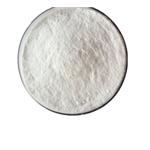Urease is found in the natural environment (water and soil) and in human body, where its occurrence is connected with protein degradation. It is an enzyme and is capable of urea hydrolysis: one molecule of ammonia and one molecule of carbamate appear in the first step, carbamate spontaneously converts into the second ammonia molecule and carbonic acid in a water solution, and ammonia is protonated. This urea hydrolysis results in pH increase. Urease and ammonia, generated during urea hydrolysis, may be toxic for human tissue and probably have role in long-lasting diseases, like atherosclerosis, urinary tract infections, or rheumatoid arthritis.
Urease can be used to analyze urea concentration in blood, urine, alcoholic beverages, natural water and environmental wastewaters; to analyze heavy metal content in natural waters, wastewaters and soil; to determine creatinine, arginine and IgG; to remove urea from artificial kidney dialyzates, alcohol beverages and fertilizer wastewaters; to control or shift pH for multi-enzyme reaction system; to hydrolyze urea as sources of ammonia or carbon dioxide in special cases, and for the wastewater reclamation for life support systems in space.




